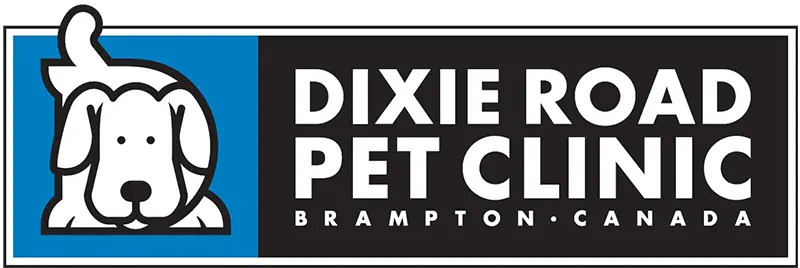Choosing the Purrfect Cat Carrier

When it comes to traveling with your feline friend, choosing the purrfect carrier is crucial for ensuring their comfort and safety. A well-chosen carrier can make all the difference in your cat’s stress levels and overall well-being during trips to the vet or longer journeys. It’s essential to select a carrier that is not only appropriately sized but also secure, well-ventilated, and easy to carry. Today’s market offers a variety of carriers featuring designs that cater to different needs, from hard-sided models offering durability to soft-sided carriers that provide a cozier environment for your pet. This article will guide you through the key features to consider when selecting a carrier, backed by expert advice and the latest research on pet travel safety. By understanding what makes a carrier ideal for your cat, you can make informed choices that prioritize their comfort and your peace of mind.
Does your cat enjoy riding around? Chances are, the answer to that question is no. Most of our feline patients absolutely despise car rides! However, sooner or later, Fluffy will need to be transported. When she does, she should always be in a carrier. But what do you look for when picking a carrier? A veterinarian offers some suggestions below. If you’re wondering about the alternative of leaving your cat at home during your trips, check out our article on “Leaving Your Cat Home Alone” for helpful advice.
Size
When choosing the purrfect carrier, consider that size matters, but bigger isn’t always better. While many animal enclosures benefit from extra space, a cat carrier should not be excessively large to prevent your cat from tumbling around during transport. Cats often feel more secure in compact spaces that emulate their natural instincts for small, snug areas. However, a carrier that’s too cramped can leave your furry friend feeling trapped and anxious. Ideally, the carrier should be about 1.5 times the size of your cat—large enough for Fluffy to sit up, turn around, and lie down comfortably in various positions, without being obstructed by her food and water dishes.
Material
Hard and soft carriers both have their own pros and cons. Nylon ones are lightweight, attractive, and easy to store. However, they do sag, and won’t really protect Fluffy from being jostled. They also don’t provide any real protection in case of an accident. Plastic ones aren’t as pretty, but they are both durable and easy to clean. You may find a carrier that opens from the top a bit easier to manage.
Cardboard
When choosing the purrfect carrier, you might come across cardboard box carriers, which are best suited for one-time use. Shelters frequently offer these as a temporary means for transporting new kittens. Although they provide a quick solution in emergencies, their durability is limited—they disintegrate when wet and can easily be escaped from if not properly secured. Opting for these carriers should only be a stopgap when no alternatives exist. For prolonged needs, it’s advisable to invest in a more robust and secure carrier to guarantee your pet’s safety and comfort.
Tips
Helping your feline pal form a positive impression of her carrier will definitely make things easier for you. Add some comfy bedding and some toys to the carrier, and offer Fluffy treats, praise, and catnip in it. You may want to leave it out between uses. If your kitty only sees the carrier before she goes for a dreaded car ride, she may bolt for cover as soon as she spots it! If you’re having persistent issues with your cat’s behavior around carriers or travel, consider our veterinary behavior counseling service for personalized advice and solutions.
Choosing the Purrfect Carrier in 2025: Essential Features for Safe and Stress-Free Transport
How should the carrier be positioned in the car for maximum safety?
To maximize safety, place the cat carrier on the car’s back seat and secure it with a seatbelt. This positioning prevents excessive movement, reducing the risk of injury during sudden stops or turns. Ideally, position the carrier so the front faces the seatback to limit any forward motion, which can help your cat feel more secure. Avoid placing the carrier in areas prone to direct sunlight or intense temperature changes. Keep the carrier stable, as a jostling carrier can increase stress and discomfort for your pet.
What specific security features should buyers look for?
When choosing a cat carrier, prioritize safety and comfort. Opt for a durable material like plastic, which offers better protection during transport than softer materials, such as nylon. A carrier that opens from the top can simplify placing and removing the cat, minimizing stress for both the animal and the owner. Additionally, ensure the carrier is appropriately sized—about 1.5 times the cat’s size—allowing the cat to sit, turn, and lie down comfortably without excess space that could lead to injury from tumbling during travel.
What type of openings are most practical and why?
When choosing a cat carrier, the type of opening can significantly affect both the ease of use and the stress level of your cat. Carriers that open from the top are often most practical because they allow for easier access to the cat, particularly for coaxing a reluctant cat inside or for swiftly removing them if needed. This can be especially beneficial in a veterinary setting or in emergencies where quick access to the cat is necessary. Top openings reduce the stress on both the pet and the owner by simplifying the process of loading and unloading.
What role do synthetic pheromones play in carrier comfort?
Synthetic pheromones can significantly enhance a cat’s comfort when using a carrier. These artificial pheromones mimic the natural calming signals produced by cats, helping to reduce stress and anxiety during transport. By spraying the carrier with a pheromone product before use, owners can create a more soothing environment, which may prevent the cat from associating the carrier with negative experiences such as stressful car rides. This method is especially useful for easing travel-related apprehensions, making journeys less traumatic for both the cat and the owner.
How can visual shields/privacy features help reduce stress?
Visual shields or privacy features in cat carriers can significantly reduce stress for cats during transport. These features limit the cat’s view of the outside environment, which helps decrease sensory overload from unfamiliar sights and sounds. This containment fosters a sense of security and safety, akin to the cat’s natural preference for enclosed spaces when seeking refuge. Ensuring a carrier has solid walls or covers can mimic these conditions, helping to keep the cat calm and making the travel experience less distressing.
Please contact us, your vet clinic, in Brampton, ON for all your pet’s veterinary care needs. We’re here to help!

